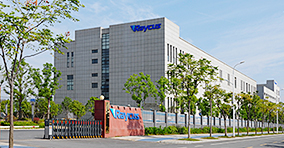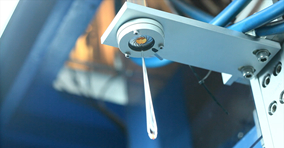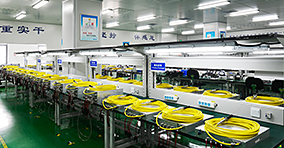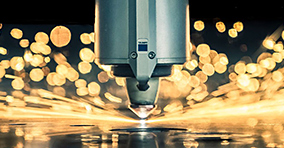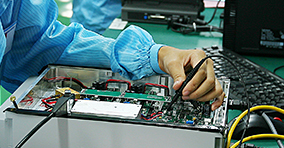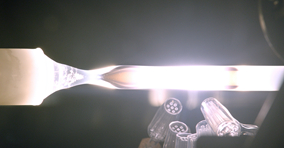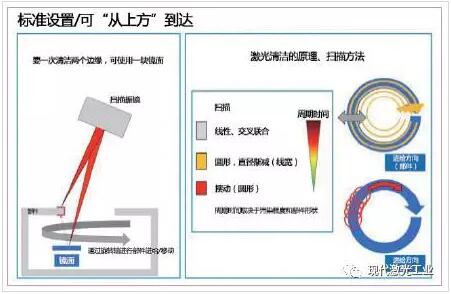Analysis of the advantages and prospects of laser cleaning technology
Welds and bonds in powertrain components must meet stringent quality standards. For best-in-class performance, joint surfaces must be thoroughly cleaned. The laser is an efficient cleaning tool that removes all traces of residual grease.
Components may be contaminated by the drawing or cooling lubricants and rust preventive oils used during the manufacturing process. These residues are usually not visible, but they can seriously degrade the quality of subsequent high-energy bonding or bonding processes. Especially in the highly automated manufacturing environment of the automotive industry and its suppliers, the standards for component quality and reliability have been increasing, and surface pollutant detection has become an indispensable link in the production process.
Traditional cleaning methods are time consuming, cannot be automated, and often have a harmful impact on the environment. At the same time, there is no reliable way to measure the effectiveness of cleaning. In accordance with standards such as VDA19 and corresponding ISO guidelines, a unified procedure for checking particulate contamination of automotive functional components has been established. Recently, more attention to liquid contamination has made laser cleaning the protagonist. The pulsed laser can quickly evaporate the residual liquid in the target area, the effect is measurable, repeatable, the process is environmentally friendly, and it can be automated.
● Cleanliness improves reliability
In the production of large gear components, laser welding has become a popular choice because it requires less energy and can reduce deformation. A large number of components in automotive powertrains must meet strict quality standards. They are made of different materials and alloys, and it is difficult or impossible to weld using traditional technology.
● Powerful laser, shorter cycle
Automakers need a fast, automated way to thoroughly clean up surface residues, resulting in strong, void-free and microcrack-free welding and bonding. Laser cleaning systems, especially those using pulsed solid-state lasers, meet all of these requirements. The main factors that determine the choice of laser are the required cleanliness and the cycle time for cleaning the components.
● Reach the designated position quickly and efficiently
Time is critical in a highly automated, high-volume production process. Unlike traditional cleaning methods that require the entire component to be immersed in a solvent, or using an abrasive or thermal shock technology, laser cleaning can be performed on specific functional surfaces, such as welds and bonds, which typically do not exceed a few square millimeters in size.
The time required for cleaning depends on the time required for laser welding, which is usually between 4-10 seconds. Another advantage of selective cleaning is that it eliminates the intermediate steps of transporting components from the cleaning station to the production line. The cleaning laser is integrated in the production line, just upstream of the welding or bonding station.
● Corner cleaning
To clean specific surfaces, the scanner optics move the laser beam back and forth quickly on the workpiece. Different scan patterns and speeds can be used depending on the desired cleaning effect. Linear scanning motion can be used to clean minor contamination; if deeper cleaning is required, overlapping circular scanning motions can be used (similar to the action of an electric toothbrush). In this case, the pulse of the laser light passes through the same point multiple times, thereby enhancing the cleaning action.
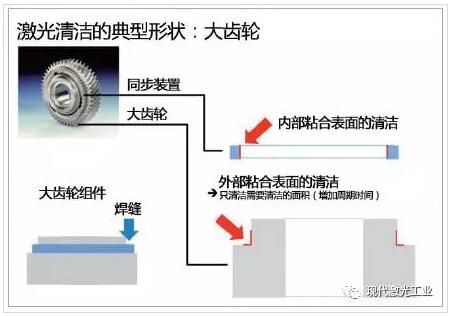
Typical laser cleaning application: Quickly remove residues that stick to the surface of transmission components. (Picture: TRUMPF GmbH + Co. KG)
The laser can also “clean round corners” without repositioning the workpiece. Place the mirror and direct the laser beam to clean both the upper and lower surfaces of the tubular or contoured component.
● Clean only the areas that need cleaning
The laser can clean extremely sensitive surfaces, such as aluminum, carbon fiber composites or coated parts, without damaging the underlying material. Alternatively, by selecting different parameter groups, the same laser can also roughen the surface and increase the strength of the bond. The flexibility of laser tools allows them to be used for a variety of tasks. TRUMPF determines the laser power and pulse frequency suitable for various applications based on the principle of “not exceeding the necessary limit, as few as possible”. This approach benefits customers because the cost of laser cleaning is about five times lower than comparable wet chemical cleaning processes.
● Is it clean enough?
Standards and guidelines for particulate contamination inspection procedures have been established, and it is expected that these standards and guidelines will sooner or later cover liquid contamination. So this is not only a question of which cleaning method is suitable, but also to verify and document the effect. That’s why TRUMPF collaborates with SITA Messtechnik GmbH.

Using scanning optics can achieve different cleaning effects by changing the scanning method. If a part of the beam is reflected by a mirror, the upper and lower surfaces of the component can be cleaned at the same time without repositioning the workpiece. (Figure: TRUMPF GmbH + Co. KG).
Based in Dresden, the company develops, manufactures and markets process measurement and control equipment for applications such as component cleanliness monitoring. SITA has developed a fluorescence test device that determines the operating parameters of a laser cleaning system based on the task being performed. By irradiating ultraviolet rays on the component, traces of fluorescent organic substances such as lubricants, oils, coolants or solvents are displayed. Non-contact sensors measure the level of residual contamination or confirm that the cleaned surface is completely free of residuals. Unlike traditional inspection methods using test inks, SITA equipment also provides accurate results for very small test surfaces.
● Another cleaning option
“Cleaning” not only means that the effect of laser processing is clean, but the processing itself is also a green process. Unlike wet chemical processes, it does not use toxic solvents and avoids noise generated by abrasive methods. In addition, the laser cleaning is very gentle, and the process is obviously faster than other methods. These advantages have been recognized by the automotive industry, and other industries are currently following up because lasers are a versatile cleaning tool.
Pulse lasers can be used to selectively clean bonded surfaces or small objects such as ancient coins, while UV lasers are ideal for cleaning large components. They can be used to remove liquid residues from CFRP components, or by setting other parameters to help remove stubborn paint or rust layers. As a high-tech cleaning tool, lasers have great potential.


